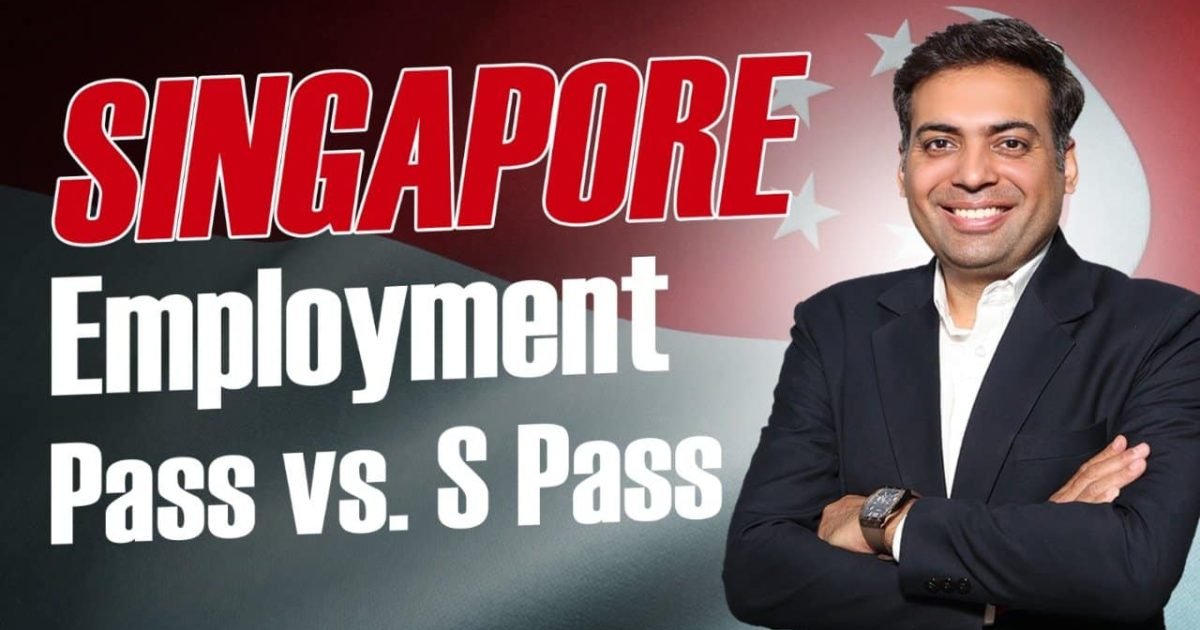Table of Contents
ToggleSingapore Employment Pass vs. S Pass: Which One is Right for You?

Singapore Employment Pass vs. S Pass
Are you planning to work in Singapore and confused between the Employment Pass (EP) and the S Pass? Understanding the differences between these two types of Singapore work visas is crucial for choosing the right option based on your qualifications, job role, and salary.
At Globexa Immigration, a trusted immigration consultant in Haryana, we help professionals and skilled workers navigate Singapore’s visa system with confidence. Let’s break down the differences so you can make the right choice.
1. Quick Comparison: EP vs. S Pass
| Criteria | Employment Pass (EP) | S Pass |
|---|---|---|
| Target Group | Managers, executives, professionals | Skilled or semi-skilled technical staff |
| Minimum Salary | SGD 5,000/month (higher for senior roles) | SGD 3,150/month (based on experience) |
| Education | Recognized university degree | Diploma or technical certificate |
| Quota & Levy | No quota or levy | Quota and monthly levy apply |
| Dependents Allowed | Yes (if salary is SGD 6,000+) | Yes (if salary is SGD 6,000+) |
2. What is an Employment Pass (EP)?
The Employment Pass is designed for foreign professionals taking up executive, managerial, or specialized jobs in Singapore.
Key Features of the EP:
Eligibility: University degree + relevant experience.
Salary Requirement: Minimum SGD 5,000/month (more for older applicants).
Dependents: Can sponsor Dependant’s Pass and Long-Term Visit Pass.
No Quota: No hiring restrictions for employers.
Ideal For:
Software engineers, finance managers, marketing heads, consultants.
Professionals in senior or specialized roles.
3. What is an S Pass?
The S Pass is suitable for mid-level skilled workers in sectors like manufacturing, construction, IT support, hospitality, and healthcare.
Key Features of the S Pass:
Eligibility: Diploma or technical certification.
Salary Requirement: Minimum SGD 3,150/month (increases with experience).
Quota: Employers must stay within industry-specific quota.
Levy: Monthly levy payable by the employer.
Dependents: Only if the salary is SGD 6,000+.
Ideal For:
Technicians, chefs, nurses, support engineers, and field service workers.
4. Employment Pass vs. S Pass – Which One Should You Choose?
| Factor | Choose Employment Pass | Choose S Pass |
|---|---|---|
| Education | University Degree | Diploma/Certificate |
| Job Level | Executive/Professional | Technical/Operational |
| Salary | SGD 5,000+ | SGD 3,150–5,000 |
| Work Experience | High-level, professional roles | Skilled or mid-level roles |
| Family Sponsorship | Easier | Only if salary exceeds SGD 6,000 |
| Employer Quota | No limit | Subject to quota |
5. Understanding Singapore’s Work Visa Framework
Singapore offers several work visa types, but the Employment Pass (EP) and S Pass are the most common for foreign professionals and skilled workers.
The Ministry of Manpower (MOM) carefully assesses each application based on:
Job role and designation
Employer’s profile
Salary offered
Educational and professional qualifications
Nationality and sector-specific demand
Working with a professional Singapore Work Visa Consultant like Globexa Immigration ensures your application is well-prepared and aligned with the latest MOM criteria.
6. Eligibility Criteria at a Glance
🔹 Employment Pass (EP)
Age: 23 to 45 (but open to all eligible professionals)
Qualification: Degree from recognized institutions
Skills: High-level managerial, executive, or specialized knowledge
Assessment: Based on COMPASS (Complementarity Assessment Framework)
🔹 S Pass
Age: 18 to 45 (some exceptions based on skills)
Qualification: Diploma or technical certification (full-time)
Skills: Practical technical or supervisory roles
Assessment: Points-based system, sector-specific quotas
💡 Did you know? MOM uses the COMPASS system (launched in 2023) to evaluate EP applications using criteria like salary, qualifications, nationality diversity, and skills shortage support.
7. Documents Required for EP and S Pass
Whether you’re applying for an EP or an S Pass, the following documents are typically needed:
✅ Common Documents
Valid passport
Job offer letter or contract
Recent passport-sized photograph
Educational certificates
Professional licenses (if applicable)
Employer’s business profile (provided by the hiring company)
📁 Additional for EP:
Detailed resume or CV
Proof of previous employment
Salary slips (for experienced candidates)
Globexa Immigration helps you organize and verify all required documents before submission to avoid delays or rejections.
8. Can You Switch from S Pass to EP?
Yes. Many workers in Singapore begin with an S Pass and transition to an EP as they:
Gain more experience,
Earn a higher salary,
Get promoted to professional-level roles.
At Globexa Immigration, we assist with S Pass to EP conversions and career planning.
9. Why Choose Globexa Immigration for Your Singapore Work Visa?
At Globexa Immigration, we are recognized as the Best Immigration Consultant in Haryana and a leading visa consultant in Panipat. Whether you’re aiming for a Singapore Employment Pass, S Pass, or any other work visa, we provide expert support throughout the process.
What We Offer:
Personalized profile evaluation
Documentation and employer support
Visa application and appeals
Post-approval assistance for dependents
Final Thoughts: EP or S Pass? Let Globexa Immigration Help You Decide
Both the Singapore Employment Pass and S Pass are valuable pathways to working in Singapore. Choosing the right one depends on your qualifications, job role, and employer’s requirements. With Globexa Immigration, you get professional guidance from the best visa services in Haryana.

